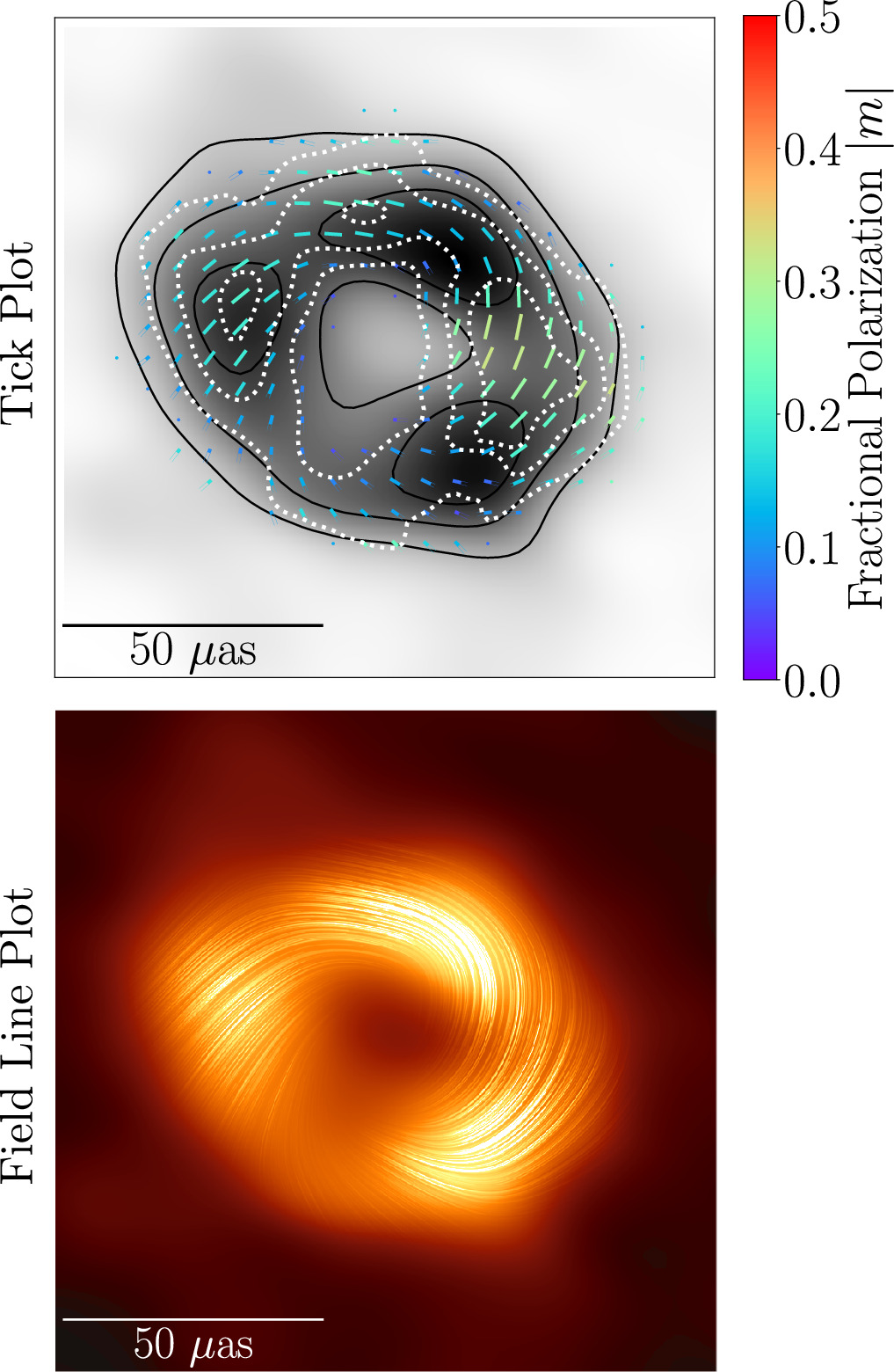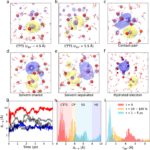2024-03-27 アリゾナ大学
<関連情報>
- https://news.arizona.edu/story/astronomers-capture-magnetic-fields-twirling-around-black-hole
- https://iopscience.iop.org/article/10.3847/2041-8213/ad2df0#apjlad2df0f10
射手座A*事象の地平線望遠鏡の最初の結果。VII. リングの偏光 First Sagittarius A* Event Horizon Telescope Results. VII. Polarization of the Ring
The Event Horizon Telescope Collaboration (See the end matter for the full list of authors.)The Event Horizon Telescope Collaboration, Kazunori Akiyama, Antxon Alberdi, Walter Alef, Juan Carlos Algaba, Richard Anantua, Keiichi Asada, Rebecca Azulay, Uwe Bach,+
The Astrophysical Journal Letters Published:2024 March 27
DOI:10.3847/2041-8213/ad2df0

Abstract
The Event Horizon Telescope observed the horizon-scale synchrotron emission region around the Galactic center supermassive black hole, Sagittarius A* (Sgr A*), in 2017. These observations revealed a bright, thick ring morphology with a diameter of 51.8 ± 2.3 μas and modest azimuthal brightness asymmetry, consistent with the expected appearance of a black hole with mass M ≈ 4 × 106M⊙. From these observations, we present the first resolved linear and circular polarimetric images of Sgr A*. The linear polarization images demonstrate that the emission ring is highly polarized, exhibiting a prominent spiral electric vector polarization angle pattern with a peak fractional polarization of ∼40% in the western portion of the ring. The circular polarization images feature a modestly (∼5%–10%) polarized dipole structure along the emission ring, with negative circular polarization in the western region and positive circular polarization in the eastern region, although our methods exhibit stronger disagreement than for linear polarization. We analyze the data using multiple independent imaging and modeling methods, each of which is validated using a standardized suite of synthetic data sets. While the detailed spatial distribution of the linear polarization along the ring remains uncertain owing to the intrinsic variability of the source, the spiraling polarization structure is robust to methodological choices. The degree and orientation of the linear polarization provide stringent constraints for the black hole and its surrounding magnetic fields, which we discuss in an accompanying publication.




